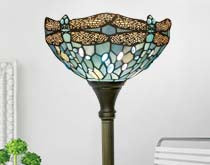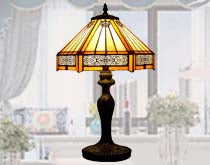Discovering the Best Energy Saving Light Bulbs
In a world dominated by sustainability, classic Tiffany lamps and energy-saving light bulbs for the home stand out as brilliant sparks of innovation. As we navigate the intricate landscape of decor and eco-friendly living, these bulbs are more than just sources of light, they embody the promise of a greener, brighter future. This guide is more than just a manual; it's your friendly companion in the process of understanding and choosing the best energy-saving light bulbs.
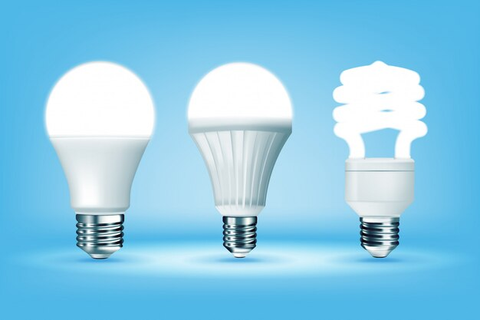
Picture your space aglow with efficient illumination that brightens your room and contributes to a sustainable lifestyle. Together, let's unravel the significance of these bulbs and embark on a path toward energy efficiency, where every switch brings us closer to a world aglow with both brightness and conscientious choices.
Understanding Energy Saving Light Bulbs
In the ever-evolving realm of modern illumination, energy-saving light bulbs, fondly known as C.F.L.s or L.E.D.s, signify a revolutionary leap in lighting technology. These bulbs go beyond mere luminosity, reshaping our brightness perception through their unparalleled efficiency. They serve as luminous beacons, not just providing radiant illumination but fundamentally altering the dynamics of energy consumption.
Unlike traditional incandescent counterparts notorious for generating excess heat, energy-saving bulbs adopt a transformative approach. They prioritize converting Energy into visible light, orchestrating a symphony of luminosity that minimizes wasteful dissipation and maximizes efficiency.
Compact Fluorescent Lamps (C.F.L.s), crucial in this evolution of lighting, showcase cleverness by stimulating mercury vapor to produce ultraviolet light. This U.V. light transforms into visible light with the help of a phosphor coating, creating a lighting solution that saves Energy and is affordable.
Concurrently, Light-Emitting Diodes (L.E.D.s), the celestial performers in this radiant showcase, leverage semiconductors to emit light with extraordinary efficiency. This process ensures instant and sustained brightness and underscores the conscientious design philosophy inherent in these bulbs.
Innovative Revolution of Energy-Saving Light Bulbs
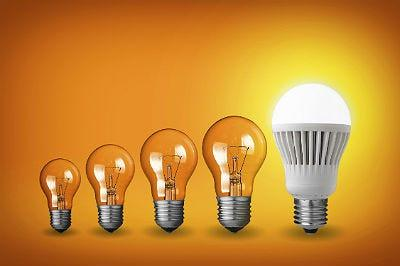
The transformation into the innovative technology of energy-saving light bulbs marks a significant leap in the evolution of lighting solutions. Traditional incandescent bulbs, while pioneering, were notorious for inefficiency, converting a substantial portion of Energy into heat rather than visible light. This inefficiency spurred the demand for alternatives, leading to the emergence of compact fluorescent lamps (C.F.L.s) and light-emitting diodes (L.E.D.s), ushering in a new era of energy-efficient illumination.
C.F.L.s, one of the early contenders in this transformation, operate by exciting mercury vapor to produce ultraviolet light. The phosphor coating converts this U.V. light into visible light, minimizing energy wastage and increasing efficiency.
The innovation extended further with the advent of L.E.D.s, where semiconductors release photons as an electric current flows through them, resulting in instantaneous and highly efficient illumination. This transformative shift was catalyzed by the growing awareness of environmental impact and the pressing need for sustainable lighting solutions.
The revolutionary nature of energy-saving bulbs lies not only in their operational efficiency but also in their environmental benefits. With consumers increasingly prioritizing sustainability, these bulbs reduce energy consumption, lower electricity bills, and contribute to a diminished carbon footprint.
The transformation into energy-saving technology represents a harmonious blend of innovation, efficiency, and environmental stewardship, illuminating a path toward a greener and brighter future.
As we delve into the intricate mechanics behind these energy-saving marvels, our exploration will seamlessly transition into the Principle of Operation, shedding light on the inner workings that enable these bulbs to shine with exceptional efficiency.
Principle of Operation of Energy Saving Light Bulbs
The brilliance of energy-saving light bulbs lies in meticulous principles. C.F.L.s begin by introducing mercury vapor, exciting it to produce ultraviolet light. The phosphor coating catches this light, transforming it into visible light. This dance renders colors and ensures an energy-efficient lighting solution.
On the L.E.D side, electrons release Energy in the form of photons as an electric current course through the semiconductor. This process creates the mesmerizing glow that defines L.E.D lighting. Unlike traditional bulbs, L.E.D.s direct nearly all Energy towards visible light production, minimizing energy wastage and aligning with sustainability goals. Understanding these principles guides us toward a brighter, more energy-efficient future.
As we journey into the realm of energy-saving light bulbs, prepare to be dazzled by the diversity that awaits. From the cost-effective dance of C.F.L.s to the semiconductor brilliance of L.E.D.s, each type illuminates a unique path toward energy efficiency. Let's explore this vibrant spectrum, blending efficiency and sustainability in our quest for the perfect lighting solution.
Explore further: Best outdoor solar spotlights
Types of Energy-Saving Light Bulbs
Two main energy-saving light bulbs are commonly used today:
Compact fluorescent lamps (C.F.L.s) and light-emitting diodes (L.E.D.s).
1. Compact Fluorescent Lamps (C.F.L.s)
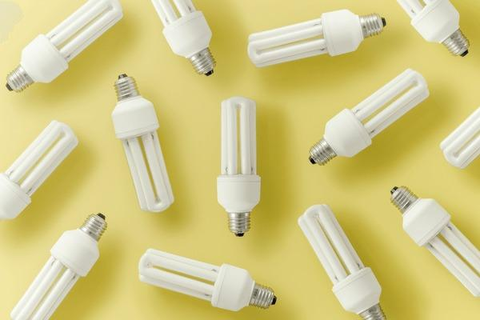
Compact Fluorescent Lamps, better known as C.F.L.s, take center stage in energy-saving lighting. These bulbs operate with ingenuity, exciting mercury vapor to produce ultraviolet light. A phosphor coating steps into the limelight, transforming this ultraviolet glow into visible light. A harmonious blend of efficiency and cost-effectiveness emerges, brightening spaces without burdening your budget.
Advantages of Compact Fluorescent Lamps (C.F.L.s)
- Environmental Impact: C.F.L.s contribute to a reduced environmental footprint as they contain less mercury than traditional bulbs. Proper disposal ensures minimal ecological impact, aligning with sustainable practices.
- Cost Savings: Enjoy long-term cost savings with C.F.L.s, as their energy efficiency reduces electricity bills. Although they might have a slightly higher upfront cost, the overall savings make them a financially prudent lighting choice.
- Versatility in Applications: C.F.L.s come in various shapes and sizes, catering to different lighting needs. This versatility allows for applications in diverse settings, from residential spaces to commercial establishments.
- Color Temperature Options: C.F.L.s offer a range of color temperature options, providing flexibility to choose lighting that suits the ambiance of a space. This feature allows users to create various moods and atmospheres with their lighting.
- Government Incentives: In many regions, governments offer incentives for using energy-efficient C.F.L.s. These incentives may include rebates or discounts, making C.F.L.s an energy-efficient and financially attractive choice.
Disadvantages of Compact Fluorescent Lamps (C.F.L.s)
- Mercury Content:C.F.L.s contain small amounts of mercury, posing a hazard if broken and requiring careful disposal to avoid environmental impact.
- Limited Dimming Options:Some C.F.L. models have limited dimming capabilities, restricting flexibility in adjusting brightness according to preferences.
- Warm-Up Time:C.F.L.s may take a moment to reach full brightness, impacting the instant illumination experience desired in certain applications.
- Sensitivity to Temperature: Temperature fluctuations can affect performance, potentially leading to decreased efficiency in extreme conditions.
- Initial Cost:While cost-effective in the long run, C.F.L.s may have a higher initial purchase price than traditional bulbs.
- Color Temperature: The color temperature range of C.F.L.s may vary, and selecting the desired ambiance might be limited compared to other lighting options.
- Quality of Light: Some users perceive the quality of light from C.F.L.s differently, with concerns about flickering or a less pleasing light spectrum compared to alternative technologies.
2. Light-emitting diodes (L.E.D.s)
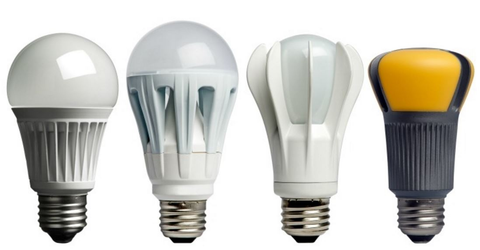
Enter the stars of energy-efficient lighting – Light-Emitting Diodes, or L.E.D.s. Picture this: semiconductors gracefully emit light as an electric current dances through them. The result?
An instantaneous and incredibly efficient illumination that not only brightens your space but also stands the test of time. Yes, L.E.D.s may come with a slightly higher upfront cost, but consider it an investment in a long-lasting radiance that pays dividends in energy savings over the years.
Advantages of Light Emitting Diodes (L.E.D.s)
- Exceptional Energy Efficiency: L.E.D.s stand out for their outstanding energy efficiency, converting a higher percentage of Energy into visible light, thereby reducing energy consumption and costs.
- Extended Lifespan: On average, they benefit from a prolonged lifespan with L.E.D.s, lasting between 25,000 to 50,000 hours. This longevity minimizes the frequency of replacements, offering long-term savings.
- Minimal Heat Emission: L.E.D.s emit minimal heat during operation, creating a safer and cooler lighting environment. This characteristic enhances safety and reduces the risk of overheating in enclosed spaces.
- Instantaneous Illumination: Enjoy instant brightness as L.E.D.s illuminate immediately upon powering, providing a quick and responsive lighting solution. This feature is particularly advantageous in situations requiring instant light.
- Environmentally Friendly: L.E.D.s are mercury-free and recyclable, making them environmentally friendly and reducing the environmental impact of traditional lighting options.
- Dimmability Options: L.E.D.s offer versatile dimming options, allowing users to control and adjust the intensity of light according to preferences. This adaptability adds flexibility and enhances the overall lighting experience.
- Durability and Robustness: L.E.D.s are known for their durability and robustness, making them resilient to shocks, vibrations, and external impacts. This durability ensures a reliable lighting solution even in challenging conditions.
Disadvantages of Light Emitting Diodes (L.E.D.s)
- Upfront Cost: L.E.D.s may have a higher initial cost than traditional bulbs. However, long-term savings often offset this due to their extended lifespan and energy efficiency.
- Sensitivity to Temperature: Extreme temperatures can affect L.E.D performance. L.E.D.s may experience reduced efficiency and lifespan in extremely hot or cold environments, requiring careful consideration in specific applications.
- Color Inconsistency: Some L.E.D products may exhibit color inconsistency, especially in lower-quality or older models. Ensuring product quality and opting for reputable brands helps mitigate this issue.
- Limited Output in Some Applications: While L.E.D.s excel in many applications, they may need to be improved in high-output scenarios. In such cases, alternative lighting solutions may be more suitable.
- Complex Recycling Process: Although L.E.D.s are recyclable, the process can be more complex than traditional bulb recycling due to the need to separate various materials. Improved recycling infrastructure and awareness can address this challenge.
- Potential Glare: In certain situations, L.E.D.s may produce glare, which can be a concern in specific lighting applications. Proper design considerations and the use of glare-reducing fixtures can help manage this issue.
- Electronic Waste Concerns: The electronic components in L.E.D.s may contribute to electronic waste concerns. Sustainable disposal methods and recycling initiatives are essential to address this issue and reduce environmental impact.
Key Features and Functions of Energy Saving Bulbs
|
Features/Functions |
Compact Fluorescent Lamps (C.F.L.s) |
Light-Emitting Diodes (L.E.D.s) |
|
Energy Efficiency |
High |
Exceptionally High |
|
Lifespan |
Typically 8,000 to 10,000 hours |
25,000 to 50,000 hours |
|
Heat Emission |
Generates some heat |
Produces minimal heat |
|
Instant Brightness |
Takes a moment to reach full brightness |
Instantaneous illumination |
|
Environmental Impact |
Contains small amounts of mercury |
Mercury-free and recyclable |
|
Dimmability |
Some models are dimmable |
Widely available in dimmable option |
This table provides a side-by-side comparison of key features and functions, aiding in making informed decisions based on individual preferences and requirements.
Decision Making in Choosing the Best Energy-Saving Light Bulb
1. Brightness and Color Temperature
Lumens, the guiding stars of brightness, lead you towards a radiant glow. Picture higher lumens as a guarantee for brilliant illumination. Additionally, immerse yourself in the ambiance by considering color temperature – opt for a cozy warm or a focused cool hue to set the perfect mood in your space.
When choosing energy-saving light bulbs, let lumens be your compass, ensuring that the brightness aligns seamlessly with your preferences. The nuanced world of color temperature adds an extra layer of personalization, allowing you to craft an ambiance that resonates with the unique character of your living space.
2. Compatibility
Selecting an energy-saving light bulb is about efficiency and creating a harmonious connection. Picture this: a bulb that seamlessly fits your fixtures and dances gracefully with dimmer switches. The goal is not just illumination; it's about integrating your lighting choice with the distinctive character of your living space.
Imagine the satisfaction of a bulb that brightens your room and synchronizes effortlessly with your fixtures and dimming preferences. Compatibility becomes the silent orchestrator, ensuring that your lighting setup doesn't just work; it harmonizes, adding a touch of finesse to your illuminated surroundings.
3. Cost
Acknowledge the upfront investment in L.E.D. bulbs as a strategic move towards long-term efficiency. Visualize the longevity of L.E.D.s, where the initial cost transforms into a wise and cost-effective choice. Consider it an investment in sustained brilliance, reducing the need for frequent replacements and ensuring a lasting impact on your energy bills.
Embrace the financial foresight that comes with choosing L.E.D. bulbs. The cost-effectiveness unfolds over time, providing efficient illumination and substantial savings. Let the initial investment be a beacon guiding you toward a well-illuminated and economically sound future.
4. Brand Reputation
Navigating the vast sea of choices is more manageable when anchored by trust. Choose energy-saving bulbs from reputable brands known for their unwavering commitment to quality. Illuminate your space with the confidence that comes from a legacy of trust and reliability.
Picture this: bulbs that not only brighten your home but do so with the assurance of reliability. Brand reputation becomes your compass in the sea of choices, guiding you toward lighting solutions that meet and exceed expectations. Illuminate with trust, knowing you've chosen a brand with a legacy built on quality and excellence.
Top 5 Energy Saving Light Bulbs in 2024:
1. EcoGlow L.E.D. MaxElevate your space with the EcoGlow L.E.D. Max is a top performer, blending outstanding brightness with eco-friendly technology. This bulb illuminates and champions environmental consciousness, making it a stellar choice for those seeking brilliance and sustainability.
2. LumiLite Pro C.F.L.Embrace eco-conscious lighting with the LumiLite Pro C.F.L., a cost-effective and energy-efficient choice. This bulb guarantees reliable illumination with an extended lifespan, providing a compelling option for those prioritizing efficiency without compromising quality.
3. GreenRay L.E.D Luxe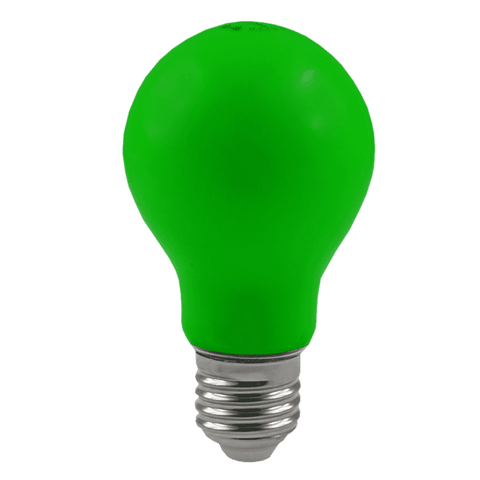
Illuminate your space with sophistication using the GreenRay L.E.D. Luxe. Boasting advanced dimmability and impressive energy efficiency, this bulb adds a touch of elegance to your surroundings while offering unparalleled control over your lighting ambiance.
4. SustainableGlow CFL PlusShine responsibly with the SustainableGlow C.F.L. Plus, a bulb that prioritizes sustainability by harmonizing energy efficiency with eco-friendly materials. Brighten your space while contributing to a greener planet with this environmentally conscious lighting solution.
5. EfficientShine L.E.D. UltraIlluminate your surroundings with confidence using the EfficientShine L.E.D. Ultra. Setting a new standard for brightness and durability, this bulb ensures a brilliant and long-lasting lighting experience, making it a top choice for those seeking optimal performance and endurance.
Guidance on Installation and Maintenance
1. Proper Installation- Ensure a seamless start by following manufacturer instructions for correct installation.
- Uphold the longevity of your bulbs with precise installation methods, creating an environment for optimal performance.
- Maximize efficiency by using the correct wattage for fixtures.
- A simple yet crucial step in ensuring your lighting setup operates at its most energy-efficient capacity.
- Sustain optimal brightness by incorporating regular cleaning into your maintenance routine.
- Elevate the ambiance of your space by keeping your bulbs free from dust and debris.
- For complex setups, consider professional installation to guarantee a flawless lighting arrangement.
- Optimize your lighting system with the expertise of professionals, ensuring a setup tailored to your specific needs.
- Turn off lights when not in use to prolong lifespan.
- Avoid frequent on/off cycles, which can reduce bulb longevity.
- tore spare bulbs in a cool, dry place.
Environmental Impact and Sustainability
Embrace the eco-friendly glow of energy-saving bulbs, such as L.E.D.s and C.F.L.s, contributing to a reduced carbon footprint. These bulbs illuminate your space efficiently and align with sustainability goals, making them a conscientious choice for environmentally conscious consumers. Choose lighting solutions that brighten your surroundings and positively impact the planet, fostering a greener and more sustainable future.
Illuminate confidently, knowing that energy-saving bulbs undergo rigorous testing for eco-friendly certifications. Manufacturers prioritize sustainable materials, ensuring that your choice of lighting aligns with environmentally responsible practices. By opting for these bulbs, you brighten your home and collectively contribute towards a more sustainable and eco-friendly lighting landscape.
As you navigate this enlightening journey, let your choices illuminate your space and the path towards a greener tomorrow.
Conclusion
As we conclude our journey through the world of energy-saving light bulbs, the path to a brighter and greener future becomes more apparent. Choosing the best energy-saving options, you illuminate your spaces efficiently and contribute to a more sustainable planet. Let every bulb be a beacon, guiding us toward a future where energy efficiency and environmental consciousness light the way.
As energy-saving lamps become increasingly popular among the public, Tiffany lamp are also quietly appearing in people's lives. Many people who like classic charm will choose a Tiffany lamp suitable for furniture to decorate their homes.












